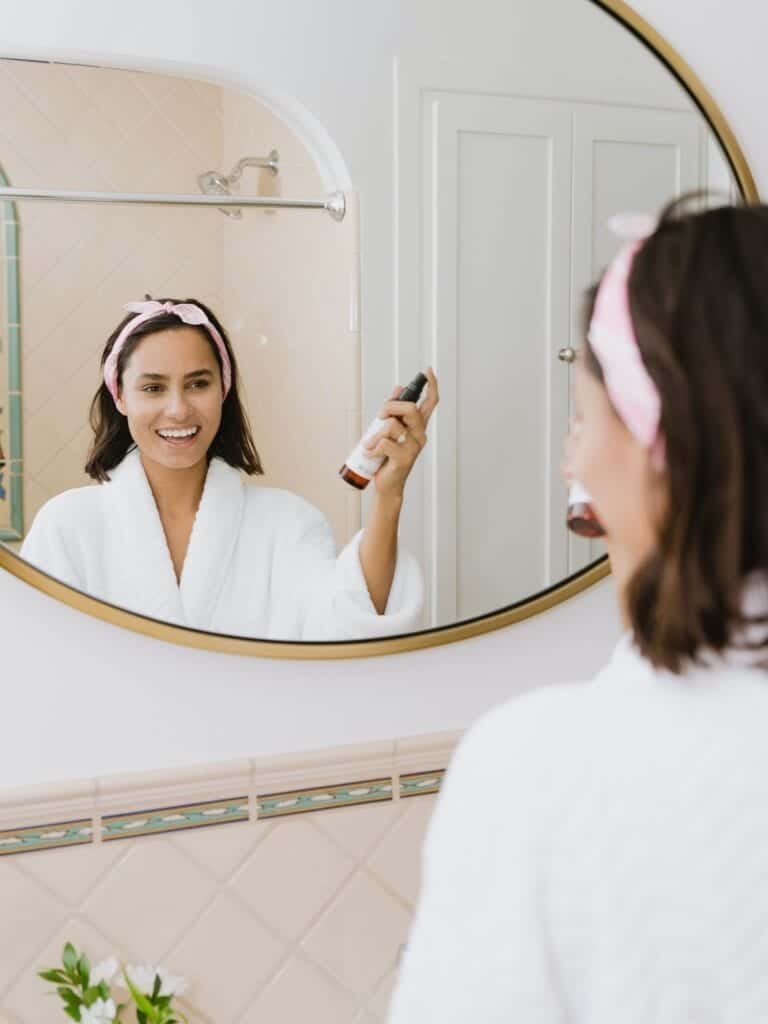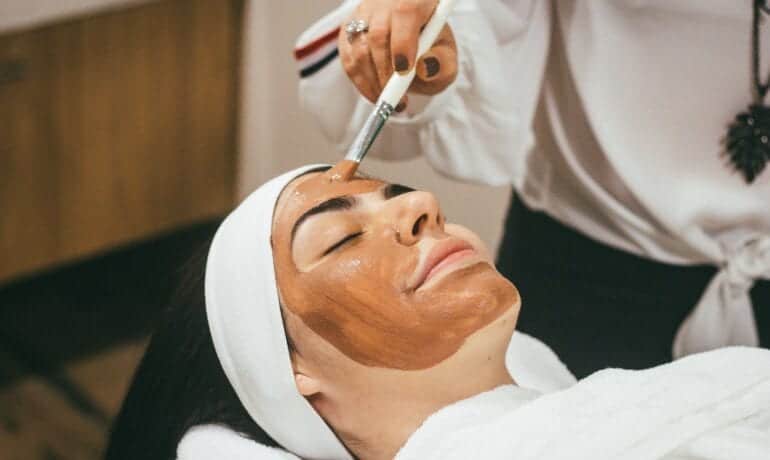A chemical peel is a non-invasive, quick, and effective way to get rid of the top layer of the skin. They are a great way to keep your skin looking youthful, fresh, and radiant. In addition, chemical peels can help improve the appearance of scars, fine lines, wrinkles, and sun damage.
What are Chemical Peels?
A chemical peel is a skin rejuvenation solution applied to your face. The acid in the solution removes dead skin cells and promotes the healthy growth of new cells.
But do chemical peels work? Chemical peels are very effective for a range of concerns. Depending on the issues you’re looking to address, you can have a light, medium, or deep chemical peel. The different depths of chemical peels indicate how deep the acid penetrates the skin.
The acid in chemical peels removes a uniform amount of damaged skin cells. When done well, the skin heals with minimal colour changes or scarring. Chemical peels usually affect the two top layers of the skin – the epidermis and the dermis. The visible outer layer is the epidermis and what sits beneath it is the dermis.
Most chemical peels work by removing only the outer layers. However, if the peel is more potent, it can remove a small part of your dermis. Dermatologists usually use chemical peels to address issues like:
- Fine lines and wrinkles
- Chemical peels for acne scars
- Scarring
- Enlarged pores
- Rosacea
- Redness
- Hyperpigmentation
During a chemical peel, the doctor applies an exfoliant acid to areas where the skin is thicker, like the nose, cheeks and chin and then to other areas with thinner skin, like around the mouth and eyes.
After the treatment, the dermatologist uses cool saline compresses to remove whatever remains of the exfoliant. The whole process can result in swelling and peeling, which usually goes away after a week or two, depending on the intensity and depth of the peel. You should avoid showering or using face wash for the first 24 hours. You’ll also be asked not to use makeup until the skin heals completely.

What Are The Different Types of Chemical Peels?
Chemical peels fall into different categories that you can choose from depending on the intensity and depth of the treatment you want. They include:
Superficial / Light Peels
These types of chemical peels target the top layer of the skin. The dermatologist applies the solution to your skin and leaves it for a few minutes. After the treatment, it’s normal for your skin to feel tight for a few hours. Since superficial peels don’t go deep, you will need regular treatments to maintain the results.
Medium Peels
Medium peels remove both the top and middle layers of the skin. The solution is applied to the skin and left for a few minutes. Due to the depth, you may feel stinging or burning, and your skin will appear red or brown for a few days.
The healing process is longer since it may take 6 weeks for your skin to return to normal. With medium peels, however, you only need to repeat the treatment every 6 to 12 months.
Deep Peels
Deep peels, as the name suggests, affect the deeper layers of the skin. To apply the solution, the dermatologist first uses a sedative or local anaesthetic to numb the area. The exfoliant is then applied to the skin and left for 30 minutes or more.
During treatment, the doctor has to monitor your heart and blood pressure since the chemicals in the exfoliant can affect your kidneys and heart. For a few days, you will experience redness, peeling and discomfort. There will also be swelling that should go down in 2 weeks.
The redness, however, can take up to 3 months to clear. Deep peels work by lightening the skin, so they are not suitable for people with darker skin tones. The effects are long-lasting, so you shouldn’t need another treatment.
What To Expect During A Chemical Peel
Professional chemical peels are performed at a doctor’s office or a plastic surgical centre. It is an outpatient procedure with no need to stay overnight at the hospital.
Before the treatment, your skin is thoroughly cleaned first. The doctor will then apply one or more chemical solutions depending on the depth of treatment you want. The solutions may include glycolic acid, salicylic acid, carbolic acid or lactic acid. The doctor applies them to small areas of your skin, creating a controlled wound that allows new skin to grow.
During the treatment, most people report feeling a burning sensation that may last about 5 to 10 minutes and then a stinging sensation kicks in. Cool compresses are applied to reduce these sensations, and you may also need pain medication afterwards, especially if you opt for a deeper peel.
Depending on the depth of the chemical peel, most people report a reaction similar to sunburn after the treatment.
So, how long do chemical peels take?
The process depends on the type of chemical peel, but generally, it can take a few minutes to more than half an hour. The process involves redness and scaling that lasts for 3 to 7 days. Mild peels can be repeated every one to four weeks until you achieve the look you want.
Medium and deep peels often result in swelling and sometimes blisters that may crust, break, turn brown or peel off over the next 7 to 14 days. After treatment, the doctor may cover the treated area with bandages. Avoid too much sun exposure for the next couple of months because the new skin can be very fragile.
Are chemical peels safe?
Chemical peels are safe as long as the treatment is done by a professional. Possible complications include temporary or permanent skin colour change and scarring, although this varies from one person to the other.
In-Clinic vs At-Home Chemical Peels
So, what’s the difference between in-clinic and at-home chemical peels?
In general, over-the-counter chemical peels you can do at home are more superficial. That means they are not as effective as medium or deep chemical peels. However, never try to do a medium or deep chemical peel at home. The acid concentration in at-home peels is usually much lower than in professional peels.
At-home chemical peels are more likely to be used to spruce up your skin and make you look a little brighter. They target concerns such as dullness, dark spots, and wrinkles, but they are far less intense than chemical peels at a clinic.
There is a reason why a majority of people opt for the best professional chemical peels. Such professionals are well-trained in applying potent chemical peels and know how to minimise the risk of potential side effects.
The Benefits of Going to a Professional for a Chemical Peel
While there are some benefits of a superficial, at-home peel, you should leave the strong stuff to the professionals. Medically trained practitioners know what type of acid to use for your skin, how much they should use, and how to carry out the treatment safely. They know precisely how long to leave the peel on your face for optimal results. Put simply, when potent ingredients are involved, they are safer in the hands of professionals.
One role of your practitioner is to determine if you are a suitable candidate for the type of peel you’re getting. Not everyone is an ideal candidate for chemical peels. People with certain medical conditions or skin types are not good chemical peel candidates.
In all aesthetic treatments, safety is paramount. The practitioner will also address any concerns you may have. Your doctor will safely perform a chemical peel and provide aftercare instructions for a speedy and effective recovery. During the consultation, ensure that you also go through the clinic’s chemical peels before and after photos to know what results to expect.
Chemical Peels London: Best Professional Chemical Peels at Harley Clinic
Ageing can cause wrinkles and fine lines to appear on the skin. Surgical and non-surgical treatments work to reverse the signs of ageing. Chemical peels are common non-surgical treatments for skin rejuvenation.
If you’re considering getting a chemical peel, book a free consultation today at The Harley Clinic.













